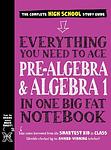Nathaniel Hawthorne
Nathaniel Hawthorne was a 19th-century American novelist and short story writer. He is best known for his novel 'The Scarlet Letter' and his exploration of themes such as guilt, sin, and the moral complexity of the human condition. His works are considered key contributions to American literature and the Dark Romanticism movement.
Books
This list of books are ONLY the books that have been ranked on the lists that are aggregated on this site. This is not a comprehensive list of all books by this author.
-
1. The Scarlet Letter
Set in 17th-century Puritan Boston, this novel tells the story of a woman who conceives a daughter through an affair and struggles to create a new life of repentance and dignity. She is forced to wear a scarlet "A" on her dress as a sign of her adultery while her lover, a revered local minister, remains unnamed and unpunished. Throughout the book, themes of sin, legalism, and guilt are explored.
-
2. The House of the Seven Gables
This novel revolves around the cursed Pyncheon family, who live in a gloomy New England mansion, cursed due to the actions of their ancestor who had an innocent man hanged as a witch to seize his property. The story explores themes of guilt, retribution, and atonement, and the narrative is interspersed with the author's philosophical musings. The present-day Pyncheons include an old maid, a daguerreotypist, and their elderly, reclusive cousin who returns to the house after a mysterious absence of many years.
-
3. Twice-Told Tales
This book is a collection of short stories that delve into the complexities of human nature and society, often through the lens of New England Puritanism. The tales are characterized by their allegorical nature, moral lessons, and exploration of themes such as sin, guilt, and pride. The author's keen understanding of the human psyche and his ability to weave intricate narratives make this an engaging read.
-
4. The Blithedale Romance
"The Blithedale Romance" is a novel about a group of people who establish a utopian society in rural Massachusetts. The story, narrated by a man named Miles Coverdale, explores the dynamics of this community and the relationships between its members, particularly the love triangle between him, a charismatic but mysterious man, and a woman who rejects traditional gender roles. The novel delves into themes of idealism, romanticism, and the harsh realities of attempting to create a perfect society.
-
5. Young Goodman Brown & Other Short Stories
This collection of short stories delves into the complexities of human nature, morality, and the pervasive influence of sin. The titular story follows a young man's journey into the woods, where he encounters a series of troubling visions that challenge his faith and reveal the potential for evil in every soul. The other tales in the collection similarly explore themes of guilt, redemption, and the often blurred line between reality and illusion, all set against the backdrop of New England and its Puritan heritage. Through allegory and rich symbolism, the stories probe the darker corners of the human experience, questioning the true nature of innocence and the weight of ancestral sins.
-
6. Tales And Sketches
"Tales and Sketches" is a collection of short stories and character studies that delve into the complexities of human nature, morality, and the American experience. The author weaves together elements of history, allegory, and symbolism to explore themes such as guilt, sin, and redemption. Set against the backdrop of New England's Puritan past, the stories often feature protagonists grappling with their consciences and the rigid societal norms of the time. The author's rich prose and psychological insight offer a window into the struggles of the human spirit, making the collection a timeless exploration of the darker corners of the soul.
-
7. The Marble Faun
The novel is a dark romantic tale set in 19th-century Italy that follows the intertwined lives of four characters: the innocent Miriam, the contemplative Kenyon, the charming Donatello, and the mysterious Hilda. As they explore art, love, and the nature of sin, a tragic event involving a mysterious crime at a Roman villa leads to a profound transformation in each of their lives. The story delves into themes of guilt, redemption, and the moral complexities of the human soul, all against the backdrop of Italy's rich cultural heritage and the enigmatic presence of the titular marble faun, a statue that symbolizes the intersection of the divine and the mortal.
-
8. Notebooks
The book in question is a collection of personal reflections, observations, and insights penned by a prominent American author during his time in Europe and at home. These intimate writings provide a glimpse into the author's private thoughts and experiences, ranging from his daily life to his musings on the human condition and the nature of creativity. The entries are varied in content and form, including diary entries, sketches, and ideas for future stories, offering readers a unique window into the mind of one of the 19th century's literary figures.







